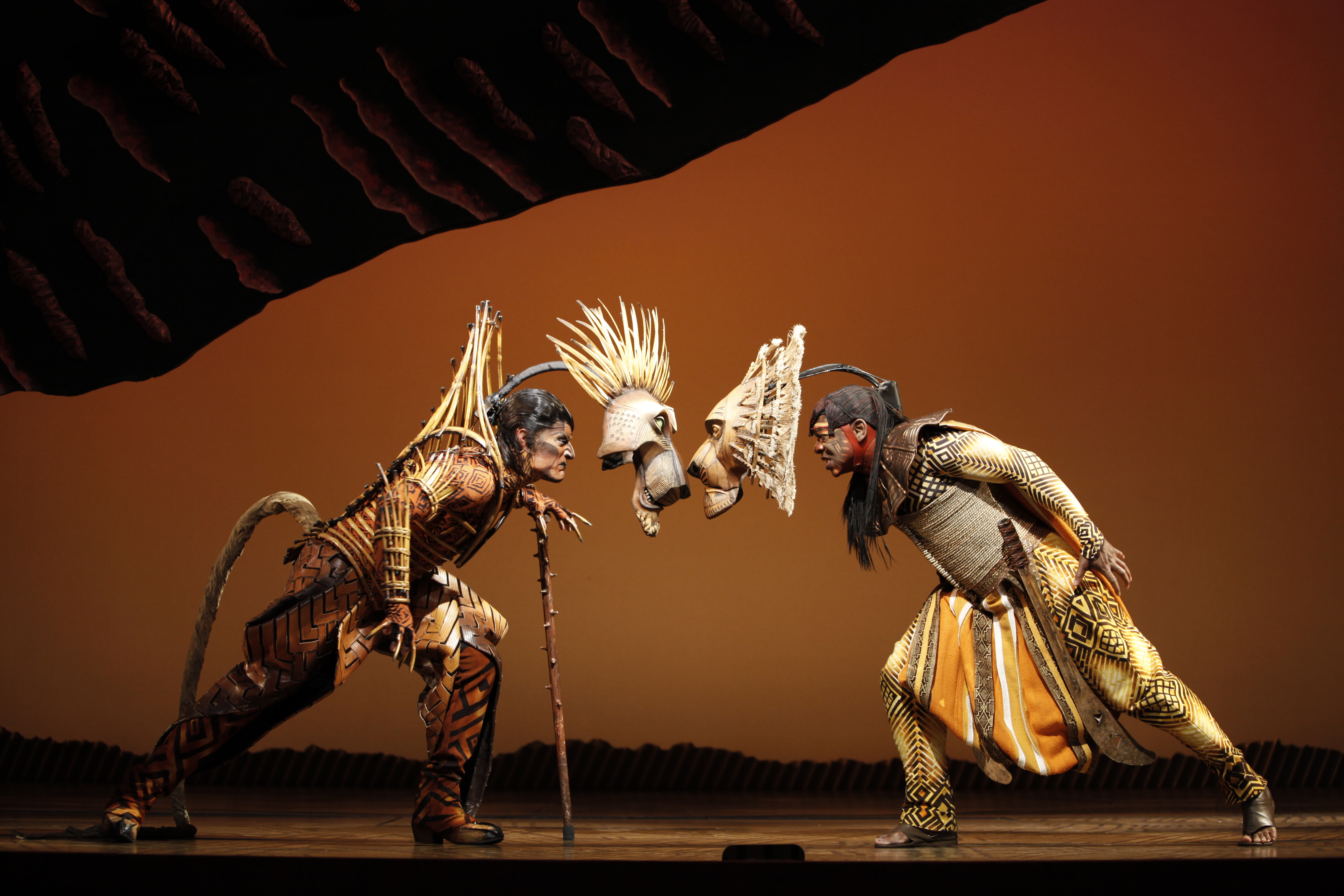
REVIEW: “The Lion King” is a fully realized theatrical experience
It’s been over twenty years, and Julie Taymor’s fully realized theatrical version of The Lion King remains fresh, innovative, experimental, and frankly, unlike anything that’s ever been done before (or since).
Two visible percussionists on either side of the stage start the beat, Rafiki (Ntsepa Pitjeng) walks in and sings that iconic “Nants Ingonyama!” that begins Elton John’s ‘Circle of Life’. A parade of animals enter from the audience walking towards Pride Rock, and we are transported along with them—if not to African savanna, then our own childhoods of which Disney played part.
Don’t get me wrong, the show doesn’t rely on nostalgia, nor a literal resemblance to its source material to capture its audiences. You may have bought a ticket hoping one of your favorite films comes to life, but the experience is more accurately experiencing the story you know in a very different way. This time, the African influence is at the forefront, with additional music and lyrics provided by South African composer Lebo M., and Taymor’s own costume design borrowing heavily from various African cultures.
The execution of the show does not hide the theatrical techniques used to bring the story to life. The Lion King is not a showcase of how human actors can mimic animal behavior, it’s a telling of a story with very human themes at its core—greed, family, responsibility. Taymor’s ‘double event’ shows the audience the human element behind the animals and the landscape. There is no trickery here, no tech nor sleight of hand to make it look like we’re watching actual lions, or hyenas, or giraffes.

Felicity Kyle Napuli as Young Nala with The Lion King ensemble | Credit: Erickson Dela Cruz
The animals are represented in varied ways—the lions and hyenas are represented by actors wearing masks, the giraffes are performers on stilts, warthogs and elephants are puppets worn by their actors (keep your eyes peeled for a baby elephant worn by the Filipino actress playing Young Nala; during gala night, it was Felicity Kyle Napuli), even tufts of grass are manipulated by ensemble members in costume, choreographed to show a vast and dynamic wilderness in the confines of a limited stage. Timon (Jamie McGregor) and Zazu (Andre Jewson) are puppets managed by their puppeteers in full make-up and costume (McGregor is all-green, to blend into their lush surroundings, and Jewson is dressed as an English butler in all blue, to signify Zazu’s role as the king’s majordomo).
The masks and puppets are also Taymor’s creation, with the help of Michael Curry, as well as Michael Ward for hair and make-up design. Their use did not diminish the feelings conveyed in the story and from the characters. Through movement (Garth Fagan is choreographer), the anthropomorphised animals evoked the necessary emotions. Other than the acting we can visibly see, Scar’s (Antony Lawrence embodied the delectable fun of playing a classic Disney baddie) deceitful nature, Mufasa’s (Mthokozisi Emkay Khanyile) nobility, and Simba’s youthfulness were carried out through specific movements. One of the show’s early emotional highlights involved the lionesses grieving. They literally pull the tears from their eyes, but the confluence of music, choreography, lighting (Donald Holder) and staging made it so that you believed their grief.
It’s actually quite astonishing that The Lion King is as stylized and as theater as it is—swapping out the usual bombast and spectacle of musical theater for an interpretation that is more expressionistic than escapist. Taymor’s double event doesn’t spoon-feed the audience with literal visuals. Instead of just sitting back and watching, we are called to participate by imagining. Viewing The Lion King is both a visual and mental workout.
Apart from all the new additions that have expanded the animated film into a three-hour theatrical experience, there’s a thrill in watching recognizable scenes and songs translated to the stage. The way the wildebeest stampede in act 1 and Mufasa’s memory taking shape among the stars in act 2 were staged (Richard Hudson is scenic designer) are unforgettable and best left seen, than read about.
Elton John and Tim Rice’s memorable songs are still highlights, with “Circle of Life” firmly situated as one of the best songs to start and end shows on. “I Just Can’t Wait To Be King” is a burst of zany color, with Gabriel Tiongson as Young Simba with Napuli as Young Nala performing expertly among props and puppets twice their size, including ostriches they ride like horses. These young cast members were at home playing roles of epic and iconic proportions, acting with youthful vibrance and energy that somewhat eclipsed their older counterparts. (Calvin Grandling plays Simba and Noxolo Dlamini plays Nala)

Juan Gabriel Tiongson as Young Simba
“Hakuna Matata” and “Can You Feel the Love Tonight?” are cartoonish, with the introduction of Timon and Pumbaa (Pierre van Heerden). Their appearance, looking very much like their animated film counterparts, strongly recall the Disney children’s fare essence of the musical that is tempered down to make the production a show for all ages, instead of a children’s musical. Indeed, the treatment of the story doesn’t necessarily pander to child audiences, even with a story as lean and as straightforward as Lion King.
The production melds multiple cultures and techniques that the whole experience is nothing short of an education. The pure creativity and theatricality of it shows the audience exactly what theater can do in the hands of a director with a crisp-clear vision. In place of sentimentality for the material, the show is well thought-out and visually cohesive from start to finish.
It may have taken quite a while before the show came to our shores, but The Lion King that has finally arrived in Manila and currently running at The Theater at Solaire is an experience that is uniquely, unequivocally a celebration of its medium—theater.

